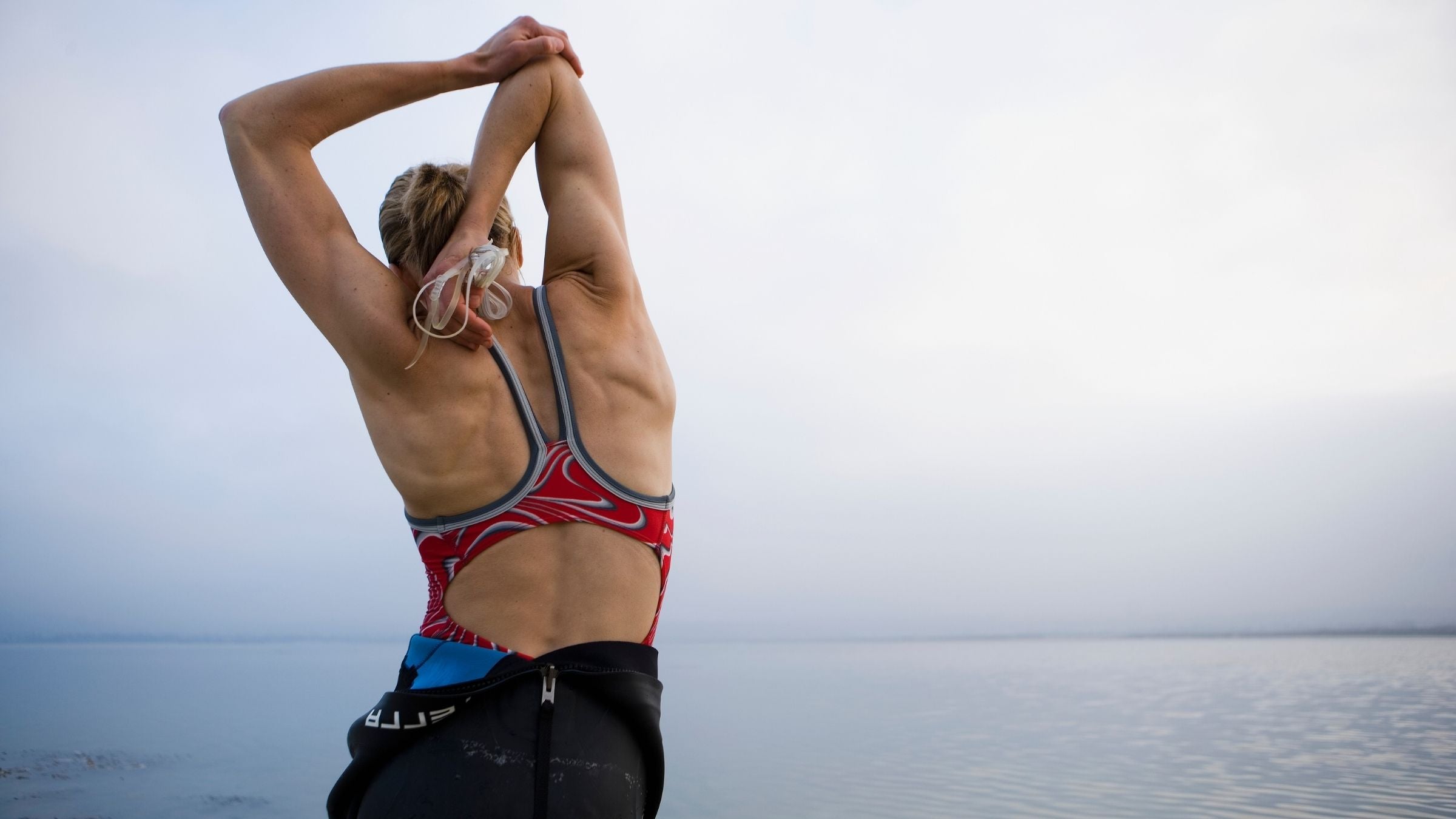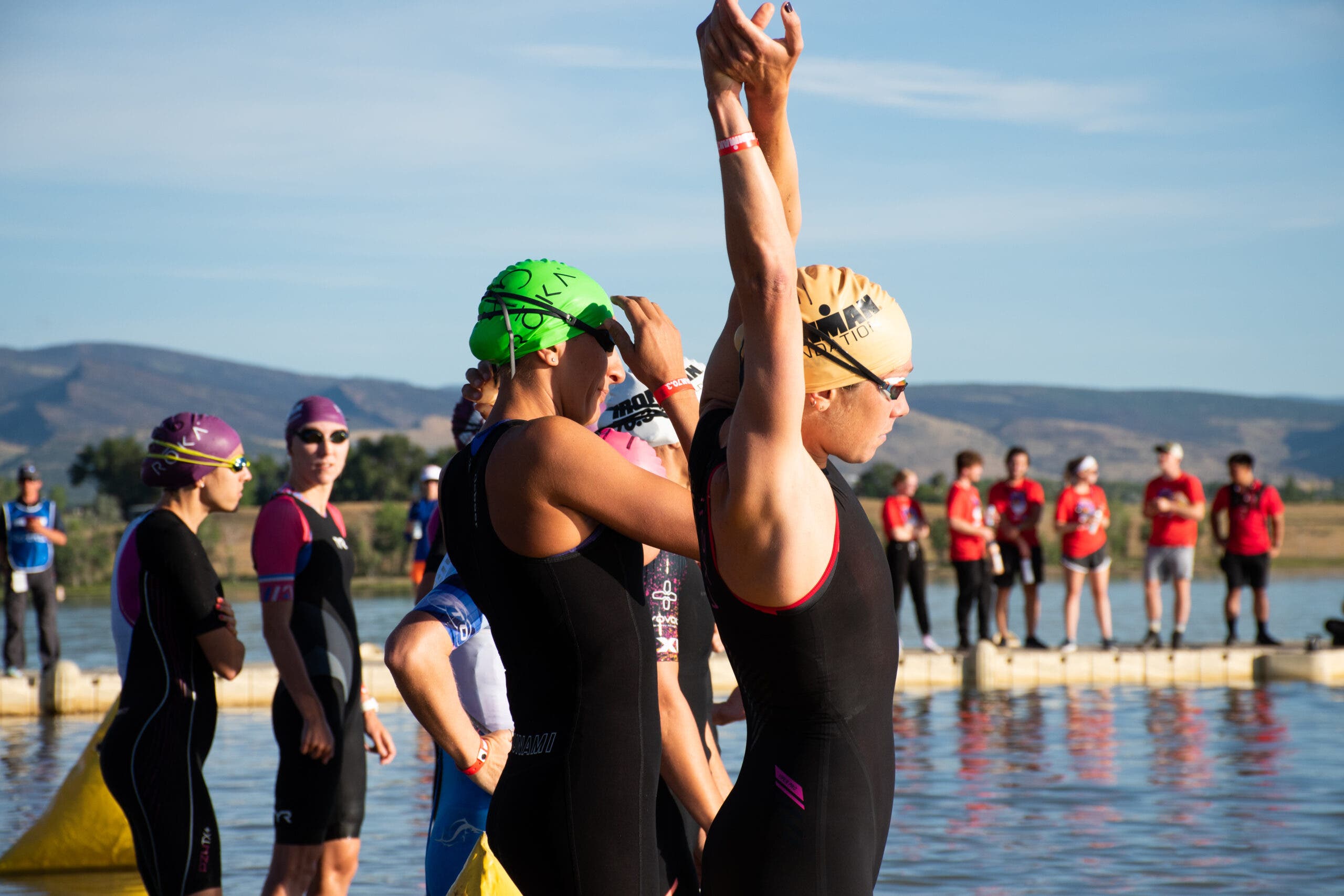Ask a Trainer: What is Swimmer's Shoulder?

(Photo: Getty Images)
Swimmer’s shoulder is a common diagnosis I see when a triathlete or swimmer comes into the clinic with shoulder pain. However, this diagnosis doesn’t tell me much about what the actual issue is. Instead, swimmer’s shoulder is similar to the diagnosis of shin splints—a broad term used to describe a number of painful overuse injuries.
Typically, with swimmer’s shoulder the pain is originating from tissues that are located between two bones in your shoulder: the acromion, located at the top of your shoulder, and the head of the humerus, or the top of the upper arm bone. The most common irritated tissues in this region are the rotator cuff tendons, called rotator cuff tendinopathy. The rotator cuff is made up of four muscles that originate on the shoulder blade, and the tendons insert onto the top of the humerus. The function of the rotator cuff is to provide stability to the shoulder joint, which is very important in the repetitive, large range of motion that every stroke of swimming involves.
If the triathlete has been swimming their entire life the issue could be due to excessive motion in the shoulder, creating an unstable joint. However, this isn’t as common in triathletes that began swimming later in life.
RELATED: An Injury Guide for Triathletes

What are the symptoms of swimmer’s shoulder?
Symptoms of swimmer’s shoulder include pain localized to the shoulder, and the pain can radiate down the side of the upper arm. Pain can range in severity, but usually starts at a low level and only occurs with swimming. With continued swimming, the pain can increase and persist outside of swimming with daily activities, especially tasks that involve reaching overhead.
How did I develop swimmer’s shoulder?
Swimmer’s shoulder is an overuse injury and typically develops from a training error or changing an aspect of your training that your body wasn’t accustomed to. Usually, that means either ramping up swimming yardage too quickly or adding in too much speed work.
RELATED: Training Plan: Returning To Swimming After a Break
It’s important to review your last 3-4 weeks of swim training to see if there have been any changes that could have contributed to the onset of pain. Many times, the pain won’t start right at the time of the training error, but in the 3-4 weeks following.
Can I continue swimming?
‘Can I continue training?’ is the most common questions I get working with all different injuries in triathletes. When it comes to swimmer’s shoulder, the answer to this question can be complex, because it depends on a number of factors.
Whether or not you can continue training with swimmer’s shoulder depends on the severity of pain. If the tendon is very irritated, meaning your pain is high (6 or higher on a scale of 1-10) and the shoulder is bothering you with activities outside of the pool, I usually advise a short period of rest from swimming. If the pain level is stable and low (no worse than 4-5/10), and occurs only with swimming, then you can usually continue to swim, but with modifications to the amount of swimming and intensity. The goal is to keep the pain low (<3-4/10) when swimming, with no increases in pain following swimming or the next day.
The good thing about swimming is you can easily make modifications with equipment that can help keep you in the water. Try swimming with fins or doing more kick sets to decrease the stress on your shoulder. Avoid pulling sets, especially with paddles, as that puts a greater load on your shoulder.
RELATED: A Strength Session for Building Stronger Shoulders
What should I do if I have swimmer’s shoulder?
If you are experiencing shoulder pain while swimming, I recommend seeing a physical therapist with experience treating triathletes and swimmers. They will perform a detailed examination to determine your impairments, such as any mobility or strength deficits. You will receive a home exercise program to address your impairments, and any training modification recommendations. The exercise program typically involves strengthening the rotator cuff, as that is imperative to tendon healing.
It may also be helpful to work with a swimming coach to have your swimming mechanics analyzed. Your pulling mechanics and body position in the water could be increasing the amount of stress placed on the shoulder.
With appropriate training modifications, an individualized home exercise program, optimal swimming mechanics, and some patience you should be able to return to pain-free swimming.